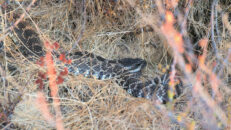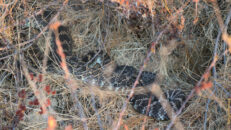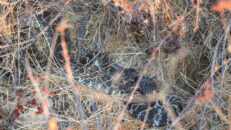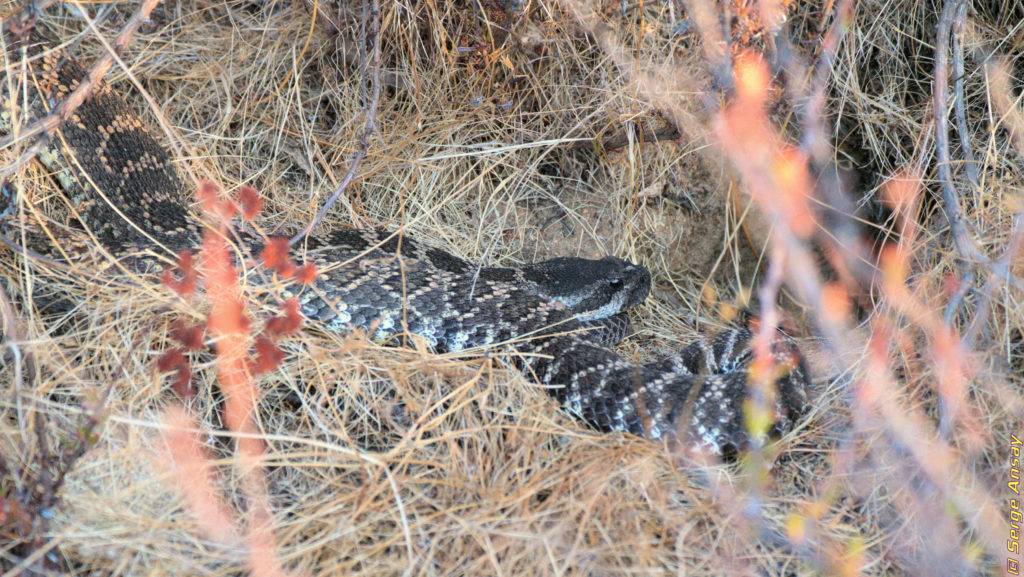Today we are going back to visit our rattling friends. It was a while ago that if you will recall in this post, I showed you a hole where I found 2 rattlesnakes, the smaller one was sitting inside the hole, and the big one, outside hidden under a dried out bush.
Since then, as I told you I would, I have been paying that particular spot regular visits. And one day, I had the luck to watch a rather unusual scene. Here are the 10 pictures that show the essential moments of this scene.



I had never seen a family of snakes before, so it was quite shocking for me to actually get to see a family of rattlesnakes. I felt like I hit the jackpot that day. Of course, I wanted so much to do more, but, as you will see in the last pic, the adult was watching me so intensely, that I felt unwelcome. I felt like I was intruding, bothering them and that I should leave now. Strange isn’t it?
Here are a few interesting facts about rattlesnakes:
- They are members of the Pit Vipers, and a such, have pits on their face, which are sensory organs. These pits allow the snake to sense temperatures. So they can detect temperature variations occasions by a mammal in proximity. One can imagine how useful that may be in the middle of the night when, say, a mouse is passing by.
- They also have double sense of smell. Not only can they smell through their nostrils like us, but they can also do it with their tongues. This explains why you see them flicking their tongue out all the time. When they bring back their tongue inside their mouth, a special organ, known as Jacobsen’s organ, located in the roof of the mouth, analyzes the chemicals collected on the tongue and tells the snake what is in the air ahead of him.
- We all know that rattlesnakes bite their preys, and that their venom is deadly. But did you know that they also replace their fangs every 6 to 10 weeks? Also, one should be careful even with baby rattlesnakes: they are born with fully functional fangs and venom.
- Their rattle is made of keratin, the same stuff that make up our fingernails, as well as horns, hooves, or claws in most animals. Eastern rattlesnakes get a new rattle everytime they shed. However this is not true for the Western rattlesnakes who will stop gaining new rattles once they are fully grown. Then, they will only replace one rattle at each shed.







